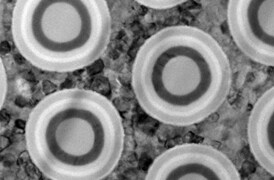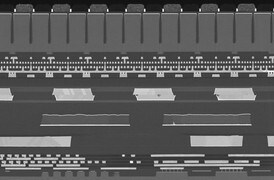Search

ELECTRICAL FAILURE ANALYSIS SYSTEMS
Meridian 4 System
Photon emission microscopy and laser scanning microscopy for electrical fault localization.
Join the Conversation
The ability to improve yield and reliability includes detailed defect analysis. Design debugging of marginal failures can be more challenging due to voltage or timing issues within the device. Determining the root cause of parametric failure requires isolation of its location at both the circuit level and the device level without damaging the device or obscuring the defects.
The Thermo Scientific Meridian 4 System is the preferred choice for developers of advanced, low-voltage, high-density semiconductor devices requiring performance and the ability to diagnose wide-ranging failure modes, including parametric failures and those resulting from design-process marginalities.
Advanced Thermo Scientific Sierra User Environment and Analysis Software includes the ability to construct high-quality, high-magnification image mosaics. Individual high-magnification images are acquired and then seamlessly integrated to form a high-resolution image of the device over a large field of view.
Photon emission microscopy for isolating FEOL issues
- Standard InGaAs or extended-wavelength DBX photon emission detection options for low-voltage devices and weak emission signatures requiring high sensitivity
- Low noise with unmatched signal-to-noise ratios for rapid, transistor-level fault detection
- Industry-leading results on sub-0.5 Vdd devices with the DBX configuration
Laser scanning microscopy for static and dynamic failure analysis
- High-resolution, high-contrast confocal laser scanning system
- Static Laser Stimulation (SLS) applications including OBIRCH, OBIC, and Seebeck Effect Imaging (SEI)
- Defect isolation and characterization under dynamic test conditions for advanced devices
- Soft defect localization (SDL), laser voltage imaging (LVI), and laser voltage probing (LVP) dynamic techniques enable localization of parametric failures, debug design and timing issues, and map transistor frequencies
- Optional Time-resolved LADA for critical timing analysis

TR-LADA for Dynamic OFI
Preserving sensitive circuit areas while delivering greater defect localization capabilities is what the new TR-LADA option can do for your Meridian Optical Fault Isolation system.

TR-LADA for Dynamic OFI
Preserving sensitive circuit areas while delivering greater defect localization capabilities is what the new TR-LADA option can do for your Meridian Optical Fault Isolation system.

Semiconductor Pathfinding and Research
Advanced electron microscopy, focused ion beam, and associated analytical techniques for identifying viable solutions and design methods for the fabrication of high-performance semiconductor devices.

Semiconductor Failure Analysis
Increasingly complex semiconductor device structures result in more places for failure-inducing defects to hide. Our next-generation workflows help you localize and characterize subtle electrical issues that affect yield, performance, and reliability.
Optical Fault Isolation
Increasingly complex designs complicate fault and defect isolation in semiconductor manufacturing. Optical fault isolation techniques allow you to analyze the performance of electrically active devices to locate critical defects that cause device failure.
Optical Fault Isolation
Increasingly complex designs complicate fault and defect isolation in semiconductor manufacturing. Optical fault isolation techniques allow you to analyze the performance of electrically active devices to locate critical defects that cause device failure.
Electron microscopy services for
semiconductors
To ensure optimal system performance, we provide you access to a world-class network of field service experts, technical support, and certified spare parts.